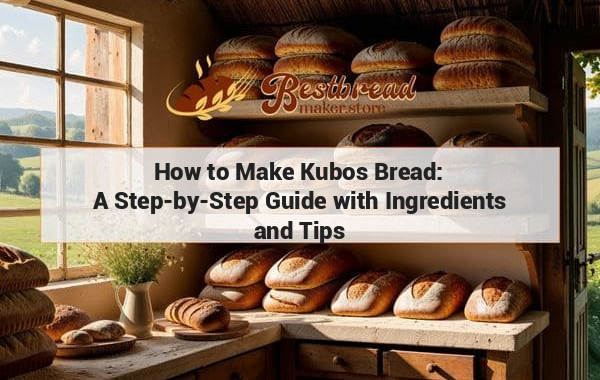How to Make Turkish Pide Bread: Traditional Recipe and Step-by-Step Guide
Turkish pide bread is a traditional flatbread that is delicious and easy to make at home. To make Turkish pide bread, start by preparing the dough with flour, yeast, salt, water, and olive oil. Let the dough rise, then divide it into portions and shape them into oval rounds. Next, add your desired toppings such as meat, cheese, vegetables, or herbs. Finally, bake the pide in a hot oven until golden brown and crispy. Enjoy this flavorful bread on its own or with your favorite dips and sauces. With this simple recipe, you can create authentic Turkish pide bread in no time.
How to Make Turkish Pide Bread: A Step-by-Step Guide
If you're curious about how to make Turkish pide bread, this guide will walk you through the process from start to finish. Turkish pide, a soft, boat-shaped flatbread, is a beloved part of Turkish cuisine and often enjoyed alongside a variety of fillings or simply with olive oil and herbs.
Key Takeaways:
Turkish pide bread is a traditional flatbread with a soft, chewy texture. It can be made with simple ingredients like flour, water, yeast, and oil, and is typically filled with ingredients like cheese, meats, or vegetables.
What is Turkish Pide Bread?
Turkish pide is a flatbread known for its boat shape and soft, airy texture. It is a staple in Turkish households and is often served as a side dish or as a main course when filled with toppings. Whether you're making it plain or with toppings like cheese, meat, or vegetables, this bread is perfect for dipping in olive oil or serving alongside dips and soups.
The Ingredients You’ll Need
The beauty of Turkish pide lies in its simplicity. To make this bread, you'll need the following:
- Flour – The base of the bread, contributing to its soft, chewy texture.
- Yeast – For helping the dough rise.
- Water – To activate the yeast and bring the dough together.
- Salt – For flavor.
- Olive oil – Adds richness and a golden color to the crust.
The Step-by-Step Guide to Making Turkish Pide
Step 1: Prepare the Dough
Start by mixing flour, yeast, water, and salt in a large bowl. Knead the mixture until it forms a smooth dough. This process may take around 10 minutes. Once done, cover the dough with a clean towel and let it rise for about 1 to 1.5 hours in a warm place.
Step 2: Shape the Pide
After the dough has risen, punch it down and divide it into smaller portions. Roll each portion into a flat oval shape. Then, pinch the edges to form the signature boat shape of Turkish pide.
Step 3: Add the Toppings
If you want to add toppings, now is the time. Some popular fillings for pide include cheese, minced meat, spinach, or potatoes. Spread your filling in the center, leaving the edges uncovered.
Step 4: Bake the Pide
Preheat your oven to 220°C (428°F). Place the pide on a baking sheet and brush the edges with olive oil for a golden crust. Bake for 10-15 minutes, or until the edges are crispy and golden, and the toppings are fully cooked.
Step 5: Serve and Enjoy
Once baked, remove the pide from the oven and let it cool slightly. Cut it into slices and serve it hot with your favorite dips or alongside a salad.
Different Variations of Turkish Pide
Turkish pide comes in many variations, depending on the region and ingredients used. Some common types include:
Cheese Pide
Cheese pide is one of the most popular versions, often made with feta or Turkish kasar cheese. The cheese melts into the dough, creating a creamy, savory flavor.
Meat Pide
For a heartier option, minced lamb or beef can be used as a topping. Spices like cumin, paprika, and sumac are often added to the meat for a burst of flavor.
Vegetarian Pide
A lighter, healthier version includes fillings like spinach, mushrooms, and tomatoes. This is a great option for those who prefer a plant-based meal.
Tips for Making the Perfect Turkish Pide
Use Fresh Yeast
The quality of the yeast you use can make a huge difference in the texture of your bread. Fresh yeast will give your dough a better rise and a lighter texture.
Let the Dough Rise Properly
Allowing your dough to rise fully will result in a fluffier, softer bread. Don’t rush this step, even if you’re eager to get baking.
Experiment with Fillings
While traditional pide is often made with cheese or meat, feel free to get creative with your fillings. Consider trying different vegetables, herbs, or even seafood.
Where Can I Find the Best Bread Makers?
If you're looking to take your bread-making skills to the next level, investing in a high-quality bread maker can be a game changer. For recommendations on the best bread makers available, check out bestbreadmaker.store. This site offers in-depth reviews and comparisons to help you choose the best machine for your kitchen.
Frequently Asked Questions
1. Can I make Turkish pide without yeast?
Yes, you can make a quick version of pide using baking powder instead of yeast. However, the texture will be slightly different, and it may not rise as much as the traditional version.
2. What can I serve with Turkish pide?
Turkish pide pairs well with a variety of dips, such as hummus, baba ganoush, or tzatziki. It also complements soups and salads for a complete meal.
3. How can I store leftover pide?
Leftover pide can be stored in an airtight container at room temperature for up to two days. You can also freeze it for up to a month; just reheat it in the oven before serving.
4. Can I make gluten-free Turkish pide?
Yes, gluten-free Turkish pide can be made by using gluten-free flour. Just make sure to add a binding agent like xanthan gum to help with the dough's texture.
5. What is the difference between pide and pizza?
While Turkish pide and pizza share some similarities, such as being baked with toppings, pide has a different texture and shape. Pide is softer, chewier, and traditionally shaped like a boat, whereas pizza is usually round and has a crisper crust.
By following these steps, you can enjoy the rich flavors and textures of traditional Turkish pide bread, whether plain or with your favorite fillings.








